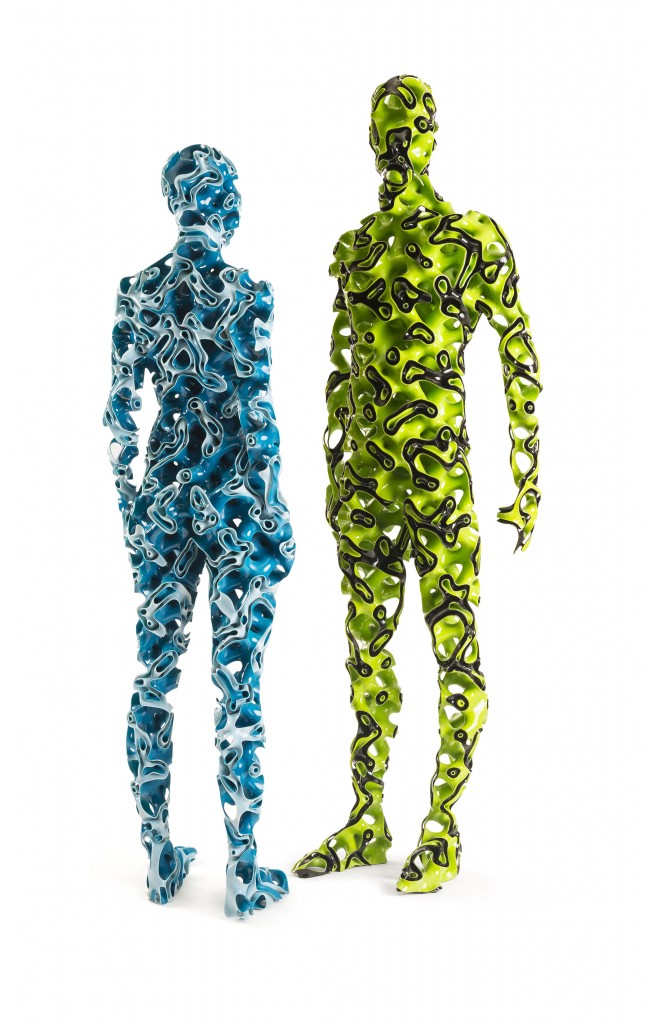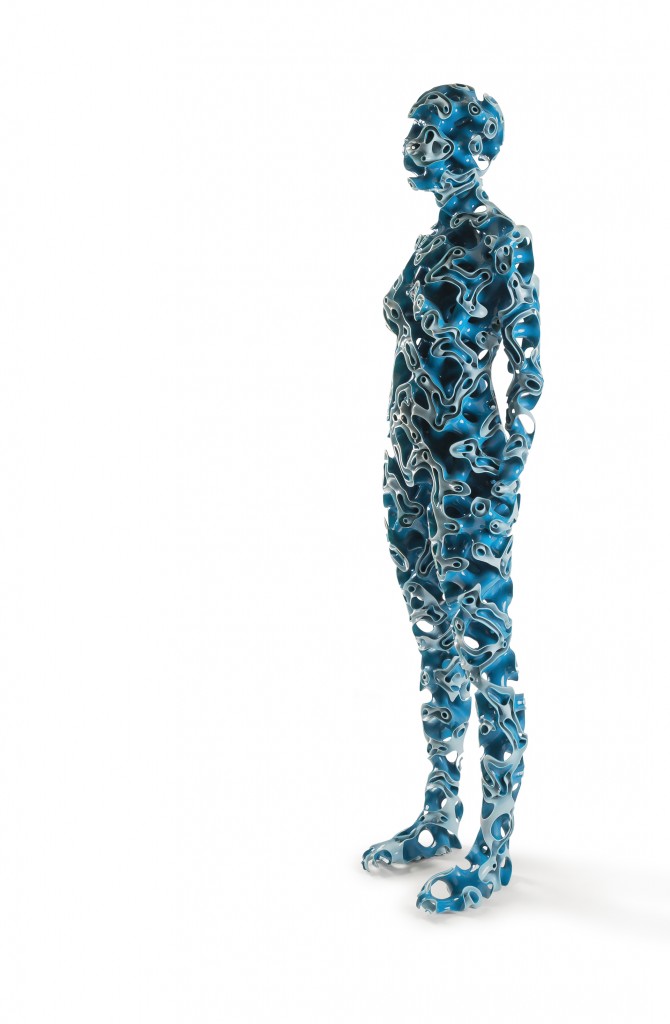The Objet 500 Connex 3D platform offers more creative possibilities than any system on the market as it combines 3D printing geometrical possibilities with multi-material, multi-density and multi-color manufacturing. This complexity makes it a particularly challenging platform for artists to experiment with. After the likes of Neri Oxman and Nick Ervinck, next up is Daniel Widrig.
The UK based acclaimed artist used the Objet 500 platform to create a futuristic 3D printed art collectionn entitled Descendants, which will be unveiled at the upcoming ‘GLOBALE: Exo-Evolution’ exhibition. The date is set for next October 30th at the ZKM | Center for Art and Media in Karlsruhe, Germany

Much like Widrig’s previous parametrically inspired work, the elaborate humanoid figures were developed by overlapping high resolution 3D scans of male and female figures, with intricate digital compositions. Through the Objet 500 system, Widrig was able to produce the complex geometries of each piece in a range of materials, in life-size human scale. The final size of the sculptures is 1751 x 452 x 292mm, for the female body, and 1848 x 627 x 342mm for the male figure. Widrig combined color with rigid and flexible materials in Stratasys range of resins to create the fluid, human-like characteristics of the pieces, while also portraying an alien presence.
“Having used 3D printing for almost a decade, it is now a natural part of my studio’s workflow, and the intricate geometries of the sculptures simply could not have been produced in any other way,” Widrig added. “There was a unique synergy in employing Stratasys’ cutting-edge color, multi-material 3D printing capabilities and production techniques on a project that focuses on synthetic lifeforms and advanced technologies, which adds a real sense of authenticity and depth to the collection. Working with Stratasys has provided us a great opportunity to design and realize an ambitious project that otherwise would never have been possible.”
Naomi Kaempfer who, as Creative Director, Art Fashion Design at Stratasys also followed the development of Neri Oxman’s Wanderer’s collection, explained that Widrig’s work “focuses on the artistic use of the latest technologies and the new realities being shaped by the ongoing technological revolution. Descendants – she said – is yet another example of Stratasys’ core purpose in revolutionizing the way things are made. It is about time that those possibilities become part of the way products – as well as art – are made.



